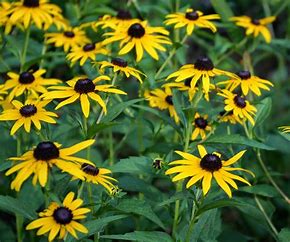According to the United States Department of Agriculture, about 80% of all flowering plants and over 3/4 of all staple crops rely on pollinators. Pollinators can include bees, butterflies, birds, moths, ants and small mammals amongst others. In addition to the food that we eat, pollinators provide vital services to our ecosystem which in turn helps to clean the air, stabilize soils, protect from severe weather, and support other wildlife.
Unfortunately, many pollinator populations are on the decline as a result of habitat loss, pollution, disease, misuse of insecticides and changing climatic patterns. If you desire more wildlife in your garden and want to help ensure a future food supply for humans, attracting pollinators to your garden is a terrific place to start. Even small pollinator gardens can help to protect them from extinction by providing habitat corridors for feeding and migration. So how can you create a pollinator garden you might ask? See below for some tips:
- Utilize native plants and heirloom varieties when possible. Research indicates native plants are four times more attractive to native bees than exotic flowers. They are also usually well adapted to your growing conditions and can thrive without much attention.
- Plant flowers in clumps. Flowers clustered into clumps of one species will draw more pollinators than individual plants scattered through the garden. If space allows for it, make the clumps three feet or more in diameter.
- Include flowers of different shapes and colors. There are many different species of pollinators that have varying flower color and petal shape preferences. Providing them with numerous options will attract a wider variety of pollinator species to your garden.
- Have a diversity of plants flowering all season so that you can feed pollinators from spring through fall. Plus, you get the added benefit of having a landscape that looks amazing the entire growing season!
Here at Tahoe Landscaping we take pride in using a wide variety of native plants in our landscape designs, which are hand-picked from our native plant nursery. Some common plants we use that are known for attracting pollinators include: Dogwood, Lupine, Spirea, Thimbleberry, Ninebark, Penstemon, Willows, Serviceberries, Asters, Salvia, Catmint, Rudbeckia, Wild Strawberry, Columbine, and Geranium to name a just a few. Give us a call and we will be happy to install a garden for you that will help to attract and support these amazing, powerful pollinators!






< Back to Blog

